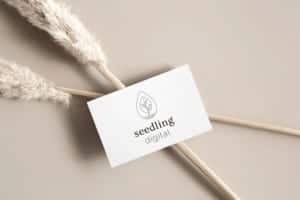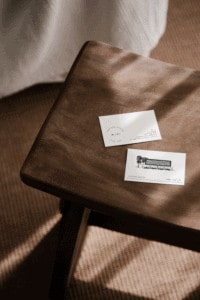If you own any sort of business, then you know your brand is essential to the achievement of your success. Your brand’s visual identity is made up of logo, color, and typography, as well as the ways in which these elements fit together into your visual composition as a whole. Why they’re all important and serve a unique purpose, typography is one you should pay careful attention to.
Brand typography can be a bit tricky, and it’s easy to get overwhelmed. How do you know you are choosing the right style? How do you know that particular typography will work? Don’t stress. We know all about the struggle of brand building, and we’re here to help.
Today, we will discuss branding and typography as a way to improve your business and brand recognition. We will work through why it is so essential for your brand story, as well as how to get started.
A Brief on Branding
When a business develops a brand, it makes it possible to be instantly recognizable. Branding lets consumers know how you wish to be perceived, how you differ from your competitors, and what they can expect from you.
When we think of branding, we tend to think of the bigger brands like Amazon, Apple, FedEx, and more. Branding often conveys its first message with logos and typography. However, branding can also include subliminal messages, the use of positive and negative space as well as emotional cues.
Fonts Versus Typography
At first glance, it may seem like fonts are the same thing as typography, but in reality, they are different. Let’s take a look at how they differ:
Fonts
Fonts are the names assigned to character designs. The shape of a set of characters has a phrase such as Arial or Times New Roman. When typing, people tend to favor specific fonts over others. In the end, they are just simple lines created to form your letters.
There are thousands upon thousands of fonts to choose from. Selecting the right font for your typography design will take time, patience, and even a good creative eye. Your fonts will be an essential part of your overall typography design. They’ll be a representation of your brand.
Typography
Typography is more like art. It answers the question: How can writing be arranged in a way to help tell a story or create a unique brand? For example, take FedEx. There is a font assigned to those letters — Univers Com 730 Basic Heavy.
That font is a sans serif font. But the typography is the artistry of the logo with the font, use of space and negative space, and colors. The logo’s negative space has a white arrow which refers to speed and accuracy, while the color differentiation refers to different services they offer.
In summary, typography is a form of artistry that tells the brand’s story through fonts, color, spacing, design, and emotion as a whole.
Where To Start with Typography?
You should know a few important details before you start putting your design together. Understanding these simple things will help you create the best typography design for your brand.
Understand the Psychology of Typography
Typography for your brand should set the mood, convey meaning, work silently, and direct perceptions. Whether you are looking for toy store branding, marketing, or manufacturing, psychology is at play in typography.
Size and Scaling
Typography needs to be as clear at a small size as it is blown up to a large size. Ask yourself, will the typography lose its appeal at 4900×4900 versus 150×150 pixels? Often it may look great at a small or medium size, but it just can’t stand up to the larger sizes, or vice versa, if details get lost in the size reduction.
It needs to look just as good on an 8 1/2 x 11 piece of printed paper as it does on the side of an 18 wheeler. At no point do you want your typography to appear blurry. A blurry or illegible design immediately compromises its professionalism and appeal – make sure it’s clear and crisp at any size.
Make Sure Your Typography is Legible
The font used in the typography should be print-lettering. Fancy, script-style fonts may look ornate and classy, but it’s not recommended to opt for a script-style font as legibility can be an issue. As a side-note, nowadays students are not even taught cursive.
Opt for ultimate readability, and that means printing, not script. Everyone should be able to read your logo, website copy, and other text universally. Also, avoid trendy fonts as they may not be universally chic, and they may not be fashionable for long. Consider longevity of your brand as a factor when choosing font and typography style.
Pick Your Typography Style
Ideally, use one type of font in the typography family, but if you need more than one, use no more than two, and they must complement one another. If they don’t compliment each other, it could turn your potential customer away for being too busy.
Know Your Industry
Choose a font that may appeal more to specific industries than others. Look at competitors and pay attention to font details and what seems to have a universal appeal within those industries.
Typography for a banking institution would have a different appeal than typography for a toy store. Typography that is emotionally appealing to children won’t be helpful for an industry aimed at adults looking to invest their money in a mutual fund. Do your research on your competitors and established trends in the industry, and plan accordingly.
Consider the Space
Consider all spaces in typography. Make use of all positive space, negative space, distance between characters, and character height and width ratios. All spacing needs to be purposeful, leading the consumer to decide what you want them to make.
The goal is to create typography that represents all emotions you want your brand to portray. If you are a Certified Public Accountant (CPA), it will likely confuse potential clients if you have whimsical typography.
Use of Color, Shapes, Textures
There is significant psychology that goes into typography, and the color, shapes, and textures should elicit the psychological reaction you are seeking. Color use should be complementary and rely on the use of the color wheel to establish a cohesive theme.
Having Trouble Building Your Brand?
Having a powerful brand doesn’t automatically happen with marketing.
Marketing merely helps you align your brand with your audience’s needs and desires. Ultimately, though, branding happens when you successfully connect with the people you want to reach — and give them a meaningful, valuable experience. That experience starts with your fonts, typography, and web design.
The good news is that this isn’t something you have to manage all on your own.
If you own a small business and you are looking to expand your brand and make it more recognizable, desirable, and prestigious, Seedling Digital is ready to help. Our process is designed to dig into the heart of your offering and develop a brand suite that lands with your target market, builds trust with your dream clients, and represents your business in the best light. To get started, contact us today!




